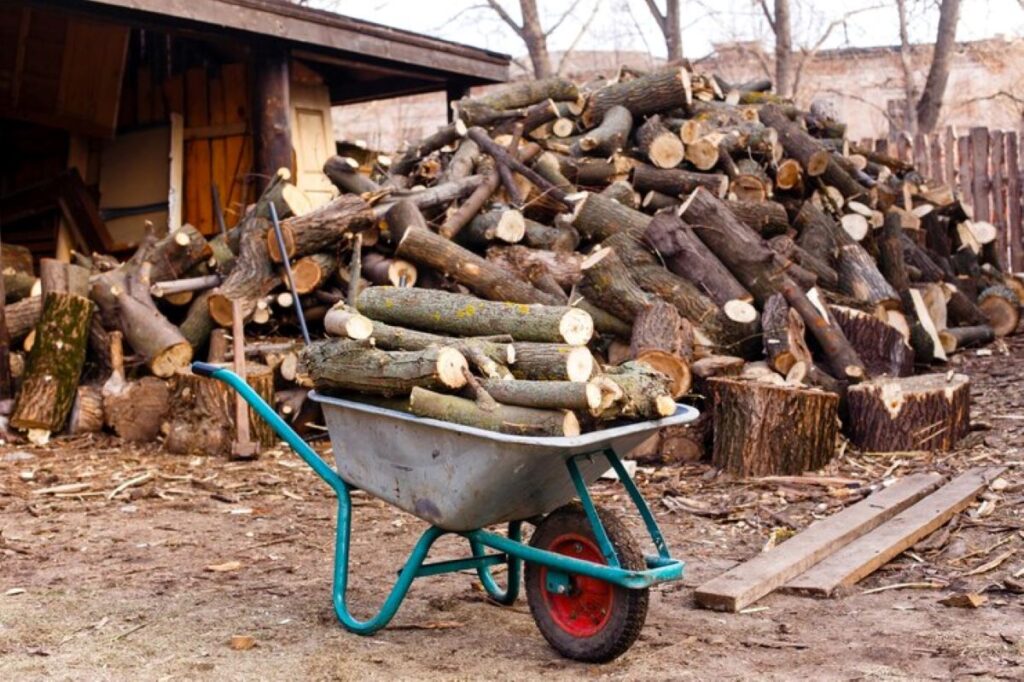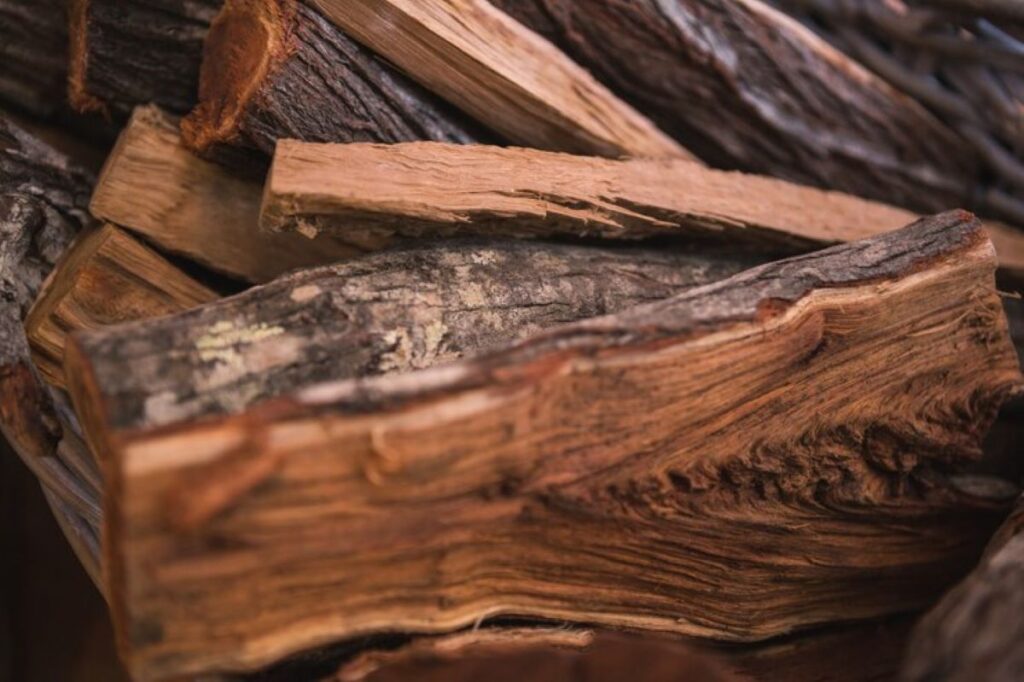How Can You Choose the Right Firewood for Efficient Home Heating This Winter?
Selecting appropriate firewood is a crucial decision for homeowners seeking optimal heating efficiency during winter months. The right choice of firewood impacts:
- Heat output and duration
- Fuel consumption rates
- Cost-effectiveness
- Indoor air quality
Different wood species have unique burning characteristics that affect their heating performance. High-density hardwoods generate intense, long-lasting heat, while lower-density softwoods burn quickly with less heat output.
A strategic approach to firewood selection helps create a comfortable indoor environment whilst minimising fuel consumption. The heating effectiveness of firewood depends on several key factors:
- Wood density
- Moisture content
- Seasoning duration
- Storage conditions
This comprehensive guide explores various firewood types and their specific heating properties. Readers will discover:
- Premium hardwood options for sustained warmth
- Essential characteristics of quality firewood
- Proper seasoning techniques
- Storage methods for maintaining wood quality
- Safe burning practices
Understanding these elements enables homeowners to make informed decisions about their winter heating needs. The right firewood choice translates to enhanced heating efficiency, reduced fuel costs, and a cosier home environment throughout the cold season.
What Are the Key Factors to Consider When Assessing Firewood Types?
Selecting the right firewood requires understanding three critical factors: wood type, density, and moisture content.
Hardwood vs Softwood Characteristics:
- Hardwoods have a denser cellular structure
- Softwoods contain higher levels of resin and sap
- Hardwoods produce longer-lasting coals
- Softwoods ignite faster but burn quicker
Density Impact on Heat Output:
- Dense woods pack more energy per volume
- Higher density = longer burn time
- Weight comparison: heavy pieces indicate higher density
- Light woods burn faster with less heat output
Moisture Content Assessment:
- Ideal moisture level: 15-20%
- Fresh-cut wood: 50% or higher moisture
- Testing methods:
- Use a moisture meter
- Check for hollow sound when pieces strike together
- Look for radial cracks in end grain
- Observe bark looseness
Quality Indicators:
- Clean, straight grain structure
- Minimal rot or fungal growth
- Absence of insects or bore holes
- Uniform colouration
- Solid feel with minimal sponginess
The combination of these factors determines the firewood’s heating efficiency and burn quality. A proper assessment helps select wood that provides consistent heat output while minimising smoke production and creosote buildup.
Which Hardwoods Are Best for Efficient Heating?
Hardwoods are the best choice for efficient home heating, with several types offering specific advantages:
1. Oak and Hickory
- Dense wood structure creates intense, long-lasting heat
- Burns slowly at high temperatures
- Produces minimal smoke when properly seasoned
- Creates lasting coal beds for sustained warmth
2. Maple
- Delivers consistent, clean-burning heat
- Releases a subtle, pleasant aroma
- Produces minimal sparking
- Creates moderate amounts of ash
3. Ash
- Known for reliable burning even at higher moisture content
- Splits easily for processing
- Generates steady heat output
- Creates minimal creosote buildup
4. Beech and Birch
- Medium-density options for moderate heat
- Quick to catch and maintain steady flames
- Ideal for mixing with denser woods
- Suitable for shoulder season burning
5. Cherry Wood
- Releases sweet, distinctive fragrance
- Burns at moderate temperatures
- Creates attractive flames
- Produces minimal smoke when seasoned
Each type of hardwood has its own special qualities that make it good for heating your home. Oak and hickory are great for producing a lot of heat that lasts a long time, while maple and ash are reliable choices that also smell nice when burned. Cherry wood adds a pleasant scent to the heating experience, making it popular for both warmth and ambiance.

Why Should You Avoid Using Softwoods Indoors for Prolonged Heating?
Softwoods like pine, spruce, cedar, cottonwood, and fir present significant challenges when used for indoor heating. These woods ignite quickly due to their high resin content, creating an initial burst of heat. This rapid combustion results in shorter burn times, requiring frequent refuelling to maintain consistent warmth.
The Risks of Using Softwoods for Indoor Heating
The high resin content in softwoods creates additional risks:
- Excessive Smoke Production: Softwoods generate denser smoke compared to hardwoods, potentially irritating eyes and respiratory systems.
- Creosote Build-up: The burning of softwoods leads to increased creosote deposits in chimneys, raising fire hazards.
- Spark Production: The natural pockets of sap in softwoods can cause dangerous popping and sparking.
Better Uses for Softwoods
Softwoods serve better purposes as kindling materials. Their quick-lighting properties make them ideal for starting fires, with pine being particularly effective. However, it’s important to note that burning pine wood indoors is not without its myths and misconceptions, as some people believe it can be used as a primary fuel source. A practical approach involves using small amounts of softwood to ignite larger pieces of hardwood, creating an efficient combination for sustained heating.
The Heating Efficiency of Softwoods
The lower density of softwoods also impacts their heating efficiency:
- Requires 2-3 times more volume compared to hardwoods
- Burns at lower temperatures
- Produces less sustained heat output
- Creates more ash residue
These characteristics make softwoods unsuitable for primary indoor heating, particularly during cold winter nights when consistent warmth is essential. While there may be some value in using untreated softwoods under specific circumstances, their overall effectiveness as a long-term heating solution is limited.
How Does Proper Seasoning Impact Firewood Efficiency?
Proper firewood seasoning plays a crucial role in achieving optimal heating efficiency. Fresh-cut wood contains up to 50% moisture content, making it unsuitable for immediate burning. The seasoning process naturally reduces this moisture to an ideal level of 20% or less.
Characteristics of Well-Seasoned Firewood
Well-seasoned firewood exhibits distinct characteristics:
- Visible End Grain Cracks – Deep splits and cracks appear as moisture evaporates
- Loose or Peeling Bark – Bark becomes easily removable from the wood
- Lighter Weight – Seasoned wood feels significantly lighter than fresh-cut pieces
- Hollow Sound – When knocked together, dry logs produce a clear, resonant sound
- Grey or Darkened Colour – The wood’s surface develops a weathered appearance
Factors Affecting the Seasoning Process
The seasoning process typically requires 6-12 months, depending on:
- Wood species and density
- Local climate conditions
- Storage environment
- Initial moisture content
- Log size and splitting
Problems Caused by Burning Unseasoned Wood
Burning unseasoned wood creates several issues:
- Reduced heat output
- Excessive smoke production
- Difficult ignition
- Increased creosote formation
- Higher fuel consumption
A moisture meter provides accurate readings to determine when firewood reaches optimal dryness. This small investment helps ensure maximum heating efficiency and prevents the common pitfalls of burning wet wood.
What Are Some Effective Storage Tips to Maintain Dryness in Your Firewood?
Proper firewood storage plays a vital role in maintaining optimal burning conditions. A well-designed storage system protects wood from moisture while promoting essential airflow.
Essential Storage Guidelines:
- Create a dedicated storage area with a solid, waterproof roof
- Position the storage space away from house walls to prevent moisture transfer
- Leave gaps between stacked wood rows for air circulation
- Use pallets or pressure-treated lumber as a base to elevate wood stacks
- Stack wood in neat rows with bark facing upward to shed water
Location Considerations:
- Select a spot with natural protection from prevailing winds
- Ensure direct sunlight reaches the wood to aid drying
- Choose level ground with good drainage
- Keep storage area accessible during winter months
A tarp can provide additional protection during severe weather, but requires careful placement. Secure it over the top of the woodpile while leaving the sides exposed for ventilation. This method prevents rain and snow from seeping in while allowing moisture to escape.
Splitting wood before storage increases surface area exposure to air, accelerating the drying process. Smaller pieces dry faster and maintain lower moisture content when properly stored. Regular inspection of the storage area helps identify potential moisture issues before they affect wood quality.
Can You Enhance Your Winter Heating Experience with Aromatic Woods?
The selection of aromatic woods adds a sensory dimension to winter heating, transforming a functional necessity into an enriching experience. Different wood species release distinct fragrances during combustion, creating unique atmospheres within living spaces.
Cherry wood stands out for its subtle, sweet fragrance that fills rooms with a gentle, pleasant scent. The aroma resembles a mild blend of fruit and flowers, making it a popular choice for creating cosy winter environments.
Apple wood produces a distinctive fragrance reminiscent of its fruit-bearing origins. Its sweet, crisp scent can enhance the ambiance of any room while providing efficient heat output.
Other aromatic options include:
- Hickory – Releases a strong, savoury scent
- Cedar – Offers a fresh, outdoorsy fragrance
- Maple – Provides a mild, sweet aroma
The intensity of wood aromas varies based on:
- Moisture content
- Wood density
- Burning temperature
- Wood seasoning duration
Combining different aromatic woods creates personalised scent profiles. A mix of cherry and apple wood delivers a complex, fruit-forward fragrance, while adding hickory introduces depth and warmth to the aromatic experience.
Proper wood selection enables users to craft their ideal winter atmosphere through both heat and scent. The choice of aromatic firewood transforms standard heating into a multi-sensory experience that enhances winter comfort. Check out more about When Sydney Tree Removal Becomes Essential for Safety and Curb Appeal.

What Are Some Safe and Efficient Practices for Home Heating Using Firewood This Winter?
Safe and efficient home heating practices protect both property and inhabitants while maximising heat output. Here are essential guidelines for optimal firewood heating:
- Store a minimum 2-week supply of seasoned firewood indoors to maintain dryness
- Clean chimneys and flues regularly to prevent dangerous creosote build-up
- Install carbon monoxide detectors near sleeping areas
- Use a protective screen or spark guard in front of fires
- Start fires with dry kindling rather than accelerants
- Never leave fires unattended overnight
Selecting high-quality hardwoods and implementing proper storage methods creates a sustainable heating system. Regular maintenance of heating equipment paired with careful fire management ensures both safety and efficiency throughout the winter months.